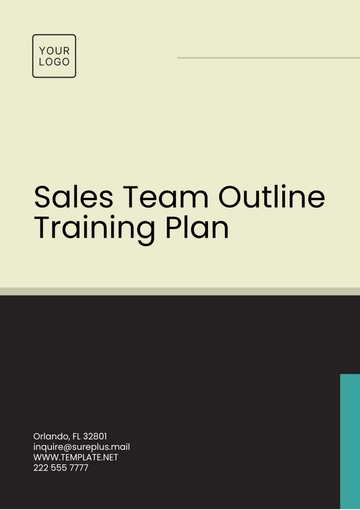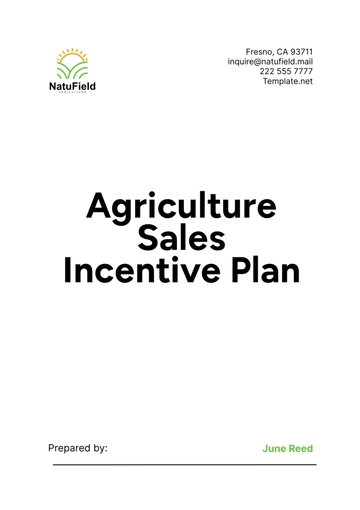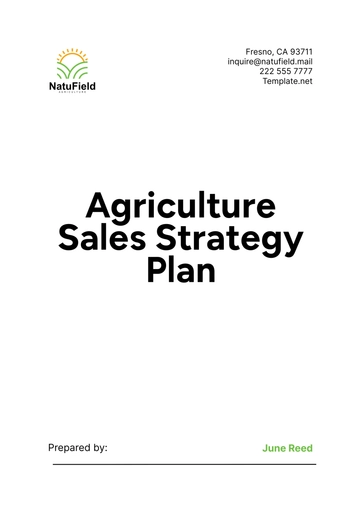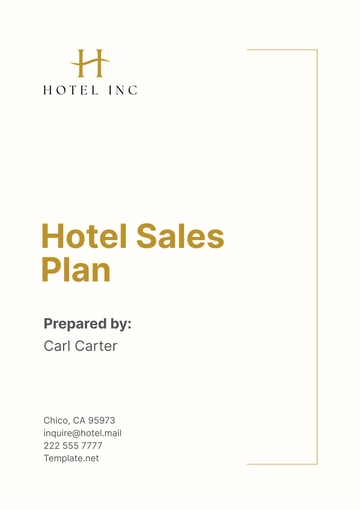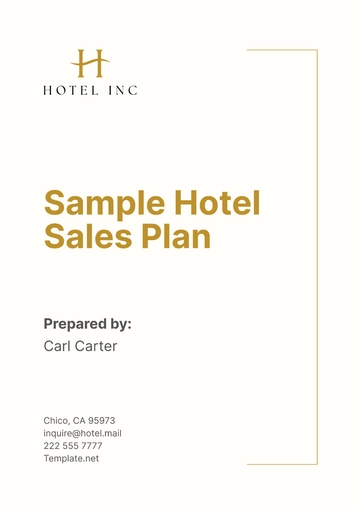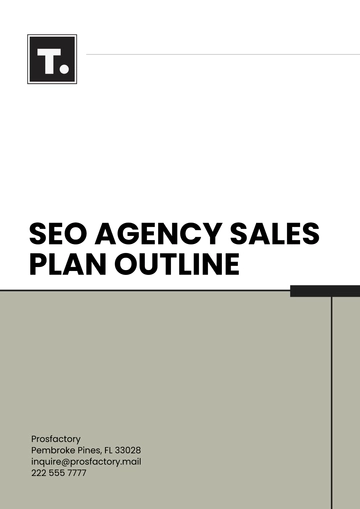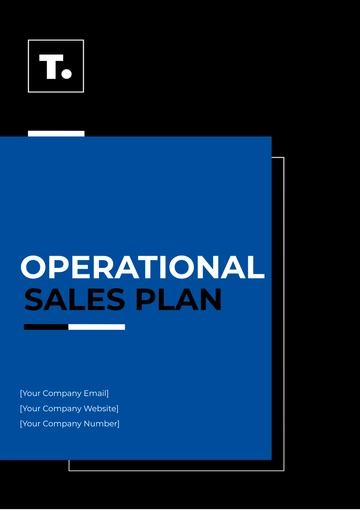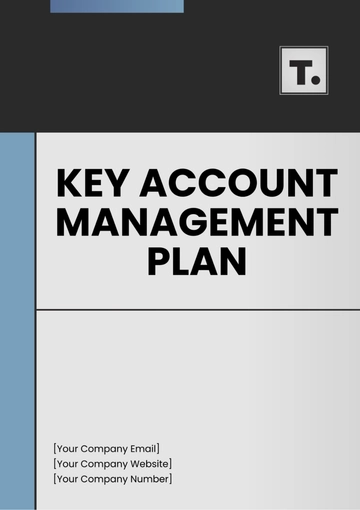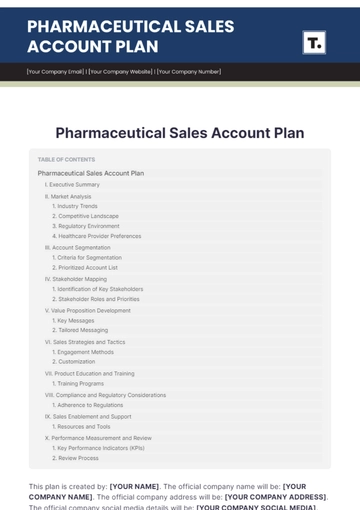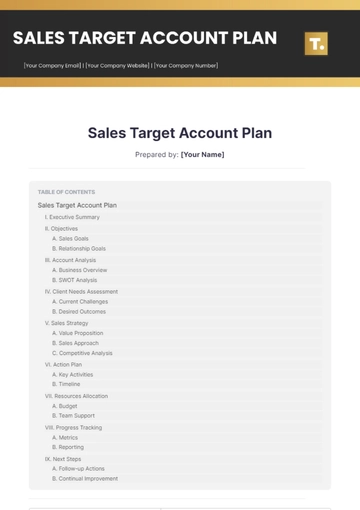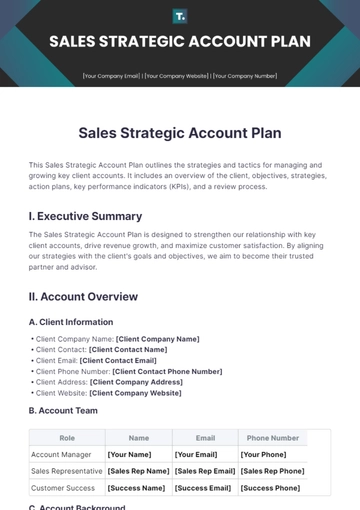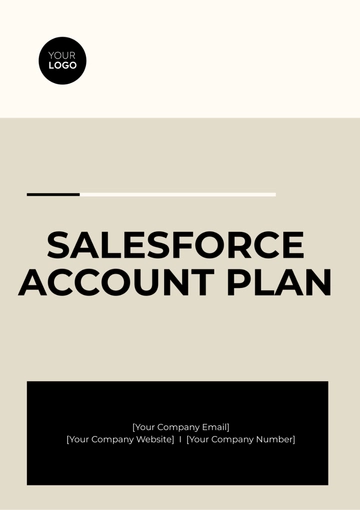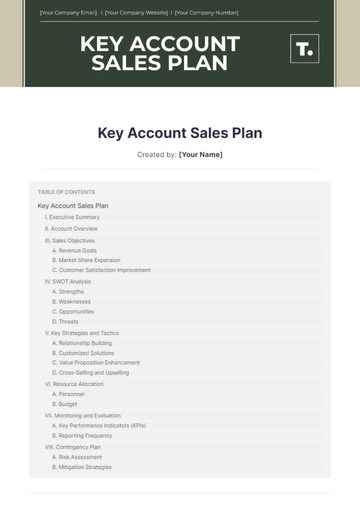Free Saas Sales Plan

Written by: [Your Name]
I. Executive Summary
This Sales Plan for [Your Company Name] outlines the strategies and tactics for effectively selling our Software as a Service (SaaS) product. This document will provide an in-depth analysis of the market, set specific sales goals, and describe our strategic approaches to achieve these goals. It also outlines the structure of our sales team, performance metrics, adaptation strategies, and resource allocation.
II. Sales Goals
Short-Term Goals | Long-Term Goals |
|---|---|
Acquire 100 new customers within 6 months | Establish [Your Company Name] as a market leader in the SaaS industry within 3 years |
Reach a monthly recurring revenue (MRR) of $50,000 within the next 12 months | Achieve an annual recurring revenue (ARR) of $1 million within 5 years |
Reduce customer acquisition cost (CAC) by 15% in the next 9 months | Attain a customer retention rate of 90% within 4 years |
III. Market Analysis
A. Industry Overview
The SaaS market continues its remarkable growth trajectory, buoyed by the accelerating adoption of cloud computing technologies and the persistent demand for scalable, cost-effective software solutions. Recent industry analyses project a robust Compound Annual Growth Rate (CAGR) of approximately 15% over the next five years. By 2055, the global SaaS market is anticipated to surge to an impressive valuation of $500 billion, reflecting the sustained momentum and vitality of the sector.
B. Competitor Analysis
Competitor | Strengths | Weaknesses | Market Positioning |
|---|---|---|---|
[Competitor A Name] | Strong brand recognition | Complex pricing structures | Established player with a wide range of features |
Diverse feature set catering to various needs | Limited customization options compared to competitors | Positioned as a trusted industry leader | |
Robust customer support | Higher customer acquisition costs compared to some rivals | Targeting both SMBs and enterprise-level organizations | |
[Competitor B Name] | Agile and innovative | Scalability challenges due to rapid growth | Gaining traction with a user-friendly interface and features |
User-friendly interface | Resource constraints impacting customer support | Positioned as a disruptive player in the SaaS landscape | |
Rapid customer acquisition through targeted marketing | Limited market presence compared to established competitors | Focused on rapid expansion and market penetration |
C. Customer Demographics
Our target customers include small to mid-sized businesses (SMBs) and enterprise-level organizations across various industries such as e-commerce, professional services, and technology. They typically face challenges related to scalability, cost-efficiency, and resource optimization. Key demographic characteristics include:
Company Size: SMBs with 10-500 employees seeking affordable and scalable software solutions. Enterprise-level organizations with complex needs and higher budget allocations.
Industry Verticals: Diverse range including e-commerce, healthcare, finance, education, and manufacturing.
Geographical Location: Initially targeting North America and Europe, with plans to expand globally in subsequent phases.
IV. Strategic Approaches
A. Product Differentiation
Our strategy for differentiating our product is centered on emphasizing the unique features and value propositions that distinguish our Software as a Service (SaaS) offering from those of our competitors.
B. Pricing Strategy
We adopt a flexible pricing strategy, offering scalable options to accommodate varying client needs. Transparent pricing models and value-based pricing ensure alignment with customer expectations while maximizing profitability.
C. Sales Channels
Our sales strategy involves a multi-channel approach, incorporating direct sales, partnerships, and digital marketing. We prioritize building strong relationships with potential clients through personalized interactions and demonstrating the tangible benefits of Salesforce solutions.
V. Tactics
Lead Generation | Customer Engagement | Customer Retention |
|---|---|---|
SEO and content marketing to drive organic traffic | Personalized email marketing campaigns | Regular follow-ups and check-ins with existing customers |
Utilizing social media platforms for brand awareness and engagement | Webinars and live demonstrations | Offering loyalty programs and referral incentives |
Paid advertising campaigns targeting specific customer segments | Active participation in online forums and communities | Continuous product updates and improvements based on customer feedback |
VI. Sales Team Structure
Details on the roles and responsibilities of team members, including their areas of focus and performance expectations.
Role | Responsibilities |
|---|---|
Sales Manager | Overseeing the sales strategy, managing the sales team, and tracking performance metrics. |
Account Executives | Building customer relationships, closing deals, and meeting sales targets. |
Sales Development Representatives | Generating leads, qualifying prospects, and setting up sales meetings. |
VII. Performance Metrics
A list of key performance indicators (KPIs) that will be tracked to measure the success of the sales strategy.
KPI | Target |
|---|---|
Monthly Recurring Revenue (MRR) | $50,000 |
Customer Acquisition Cost (CAC) | $500 |
Customer Lifetime Value (CLV) | $1,500 |
VIII. Adaptability Strategies
Plans for responding to changes in the market, customer behavior, or internal operations.
A. Market Fluctuations
Monitor industry trends and adjust the sales strategy accordingly to stay competitive.
B. Customer Feedback
Actively seek and incorporate customer feedback into product and service improvements.
IX. Resource Allocation
Resource Allocation | Budget |
|---|---|
A. Budget | |
Marketing Campaigns | $50,000 |
Sales Tools | $20,000 |
Training | $10,000 |
Customer Engagement | $30,000 |
B. Tools | |
CRM Software | $10,000/year |
Analytics Tools | $5,000/year |
Marketing Automation Tools | $15,000/year |
C. Personnel | |
Recruitment | $10,000 |
Salaries | $200,000/year |
Training | $10,000 |
By following this comprehensive Sales Plan, [Your Company Name] is poised to effectively market and sell our SaaS product, achieving our short-term and long-term sales goals while maintaining high levels of customer satisfaction and market competitiveness.
- 100% Customizable, free editor
- Access 1 Million+ Templates, photo’s & graphics
- Download or share as a template
- Click and replace photos, graphics, text, backgrounds
- Resize, crop, AI write & more
- Access advanced editor
Introducing the SaaS Sales Plan Template by Template.net, your strategic blueprint for skyrocketing software-as-a-service sales. Fully editable and customizable, it offers a structured framework to outline sales strategies, target markets, and revenue projections. Tailor the plan effortlessly to fit your SaaS business goals, ensuring clarity and effectiveness. Simplify sales planning and accelerate growth with this essential tool guiding your SaaS sales journey.
You may also like
- Finance Plan
- Construction Plan
- Sales Plan
- Development Plan
- Career Plan
- Budget Plan
- HR Plan
- Education Plan
- Transition Plan
- Work Plan
- Training Plan
- Communication Plan
- Operation Plan
- Health And Safety Plan
- Strategy Plan
- Professional Development Plan
- Advertising Plan
- Risk Management Plan
- Restaurant Plan
- School Plan
- Nursing Home Patient Care Plan
- Nursing Care Plan
- Plan Event
- Startup Plan
- Social Media Plan
- Staffing Plan
- Annual Plan
- Content Plan
- Payment Plan
- Implementation Plan
- Hotel Plan
- Workout Plan
- Accounting Plan
- Campaign Plan
- Essay Plan
- 30 60 90 Day Plan
- Research Plan
- Recruitment Plan
- 90 Day Plan
- Quarterly Plan
- Emergency Plan
- 5 Year Plan
- Gym Plan
- Personal Plan
- IT and Software Plan
- Treatment Plan
- Real Estate Plan
- Law Firm Plan
- Healthcare Plan
- Improvement Plan
- Media Plan
- 5 Year Business Plan
- Learning Plan
- Marketing Campaign Plan
- Travel Agency Plan
- Cleaning Services Plan
- Interior Design Plan
- Performance Plan
- PR Plan
- Birth Plan
- Life Plan
- SEO Plan
- Disaster Recovery Plan
- Continuity Plan
- Launch Plan
- Legal Plan
- Behavior Plan
- Performance Improvement Plan
- Salon Plan
- Security Plan
- Security Management Plan
- Employee Development Plan
- Quality Plan
- Service Improvement Plan
- Growth Plan
- Incident Response Plan
- Basketball Plan
- Emergency Action Plan
- Product Launch Plan
- Spa Plan
- Employee Training Plan
- Data Analysis Plan
- Employee Action Plan
- Territory Plan
- Audit Plan
- Classroom Plan
- Activity Plan
- Parenting Plan
- Care Plan
- Project Execution Plan
- Exercise Plan
- Internship Plan
- Software Development Plan
- Continuous Improvement Plan
- Leave Plan
- 90 Day Sales Plan
- Advertising Agency Plan
- Employee Transition Plan
- Smart Action Plan
- Workplace Safety Plan
- Behavior Change Plan
- Contingency Plan
- Continuity of Operations Plan
- Health Plan
- Quality Control Plan
- Self Plan
- Sports Development Plan
- Change Management Plan
- Ecommerce Plan
- Personal Financial Plan
- Process Improvement Plan
- 30-60-90 Day Sales Plan
- Crisis Management Plan
- Engagement Plan
- Execution Plan
- Pandemic Plan
- Quality Assurance Plan
- Service Continuity Plan
- Agile Project Plan
- Fundraising Plan
- Job Transition Plan
- Asset Maintenance Plan
- Maintenance Plan
- Software Test Plan
- Staff Training and Development Plan
- 3 Year Plan
- Brand Activation Plan
- Release Plan
- Resource Plan
- Risk Mitigation Plan
- Teacher Plan
- 30 60 90 Day Plan for New Manager
- Food Safety Plan
- Food Truck Plan
- Hiring Plan
- Quality Management Plan
- Wellness Plan
- Behavior Intervention Plan
- Bonus Plan
- Investment Plan
- Maternity Leave Plan
- Pandemic Response Plan
- Succession Planning
- Coaching Plan
- Configuration Management Plan
- Remote Work Plan
- Self Care Plan
- Teaching Plan
- 100-Day Plan
- HACCP Plan
- Student Plan
- Sustainability Plan
- 30 60 90 Day Plan for Interview
- Access Plan
- Site Specific Safety Plan



